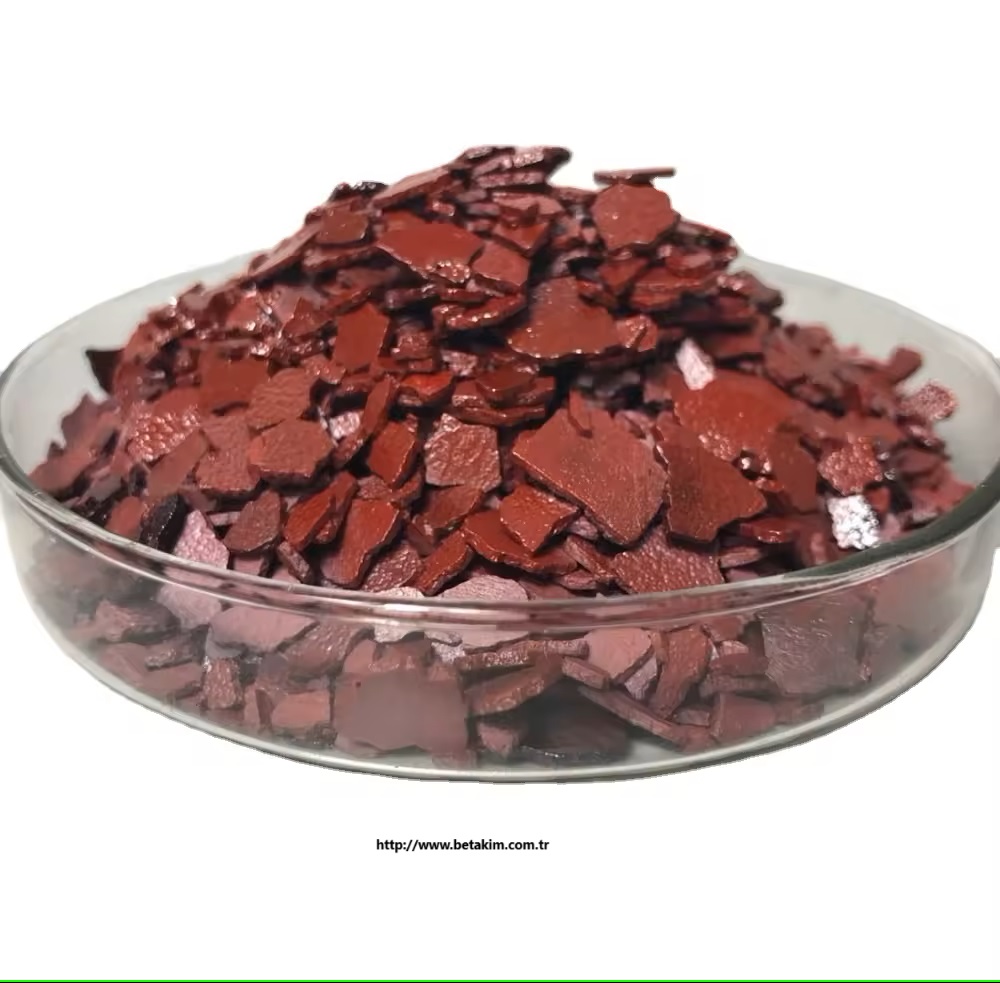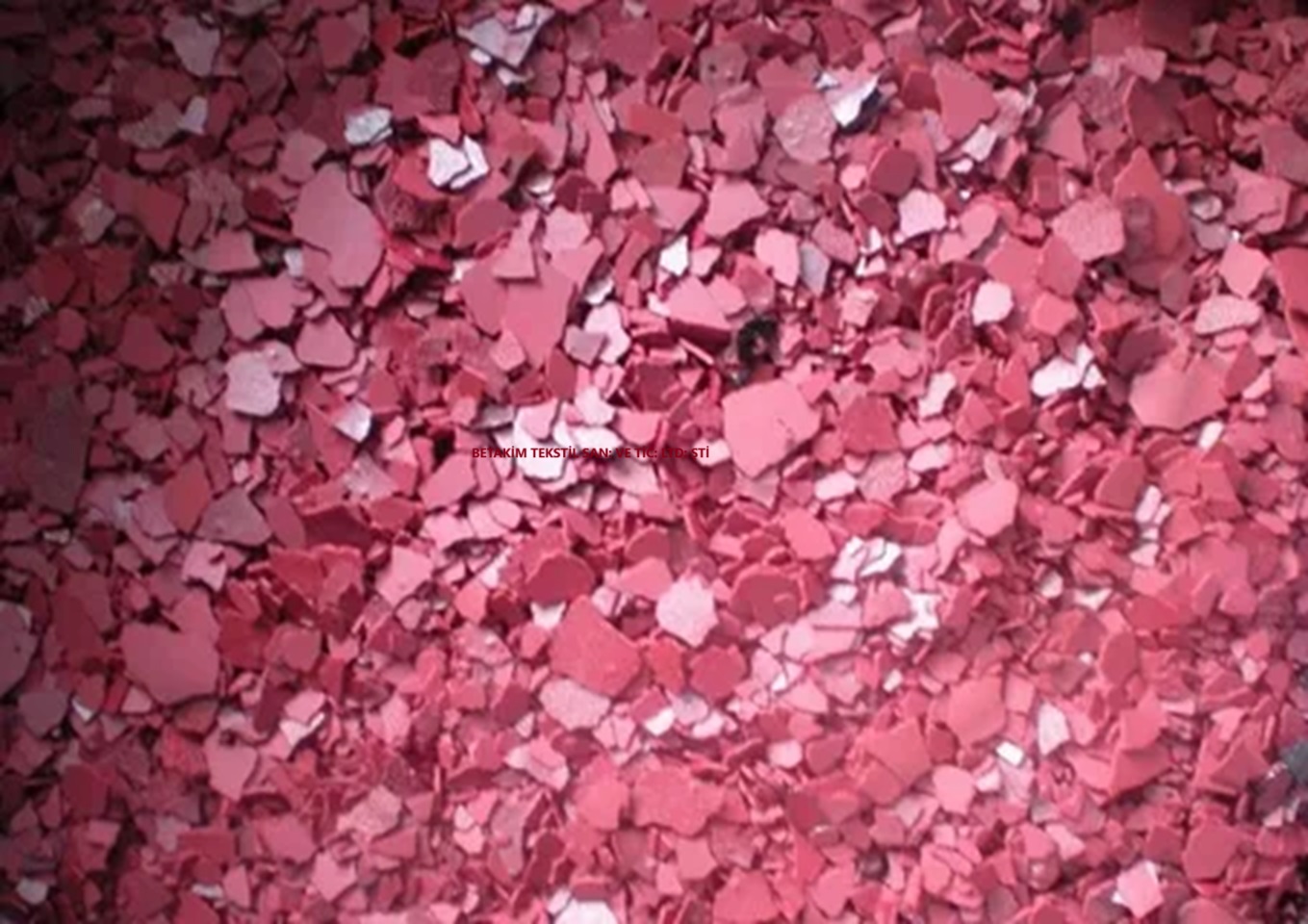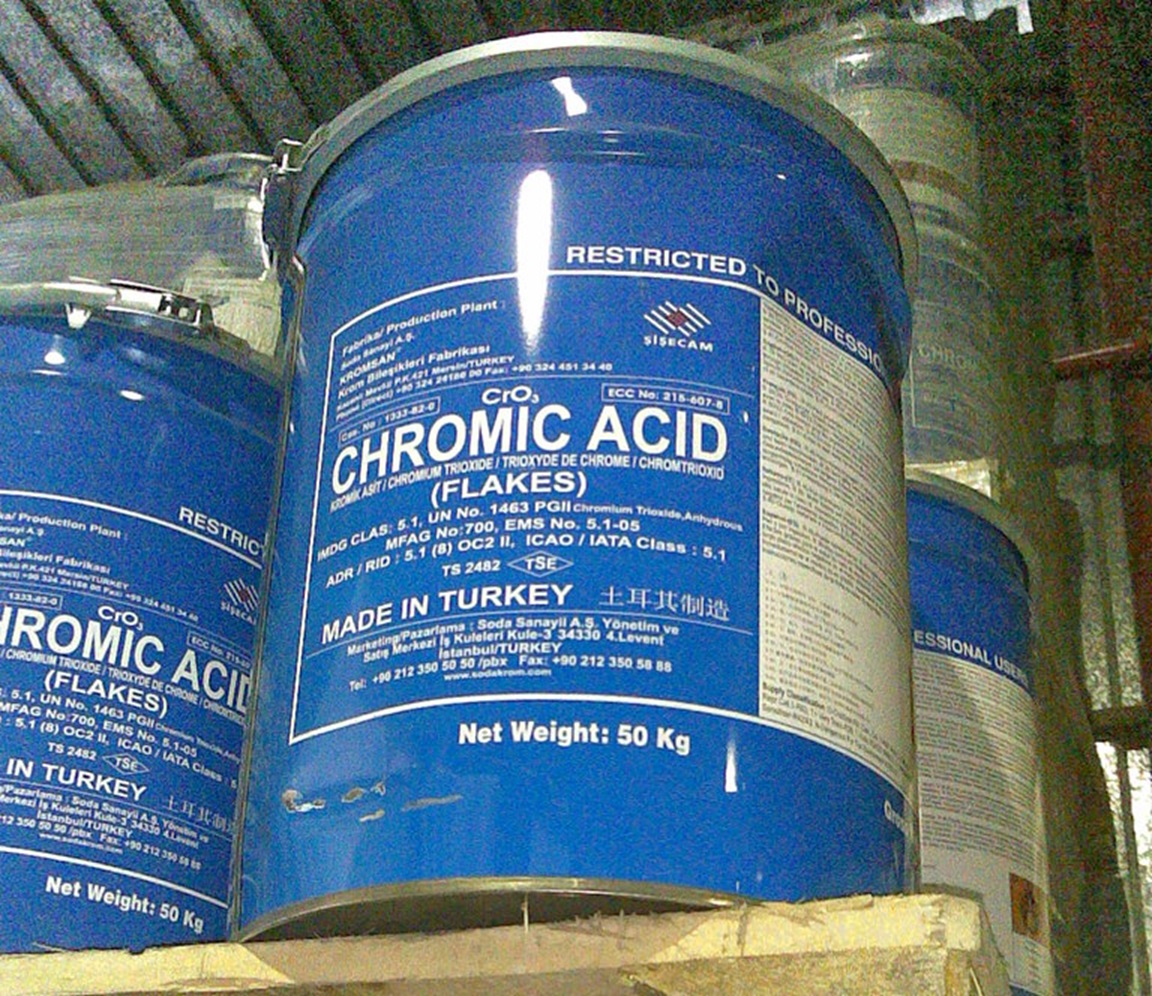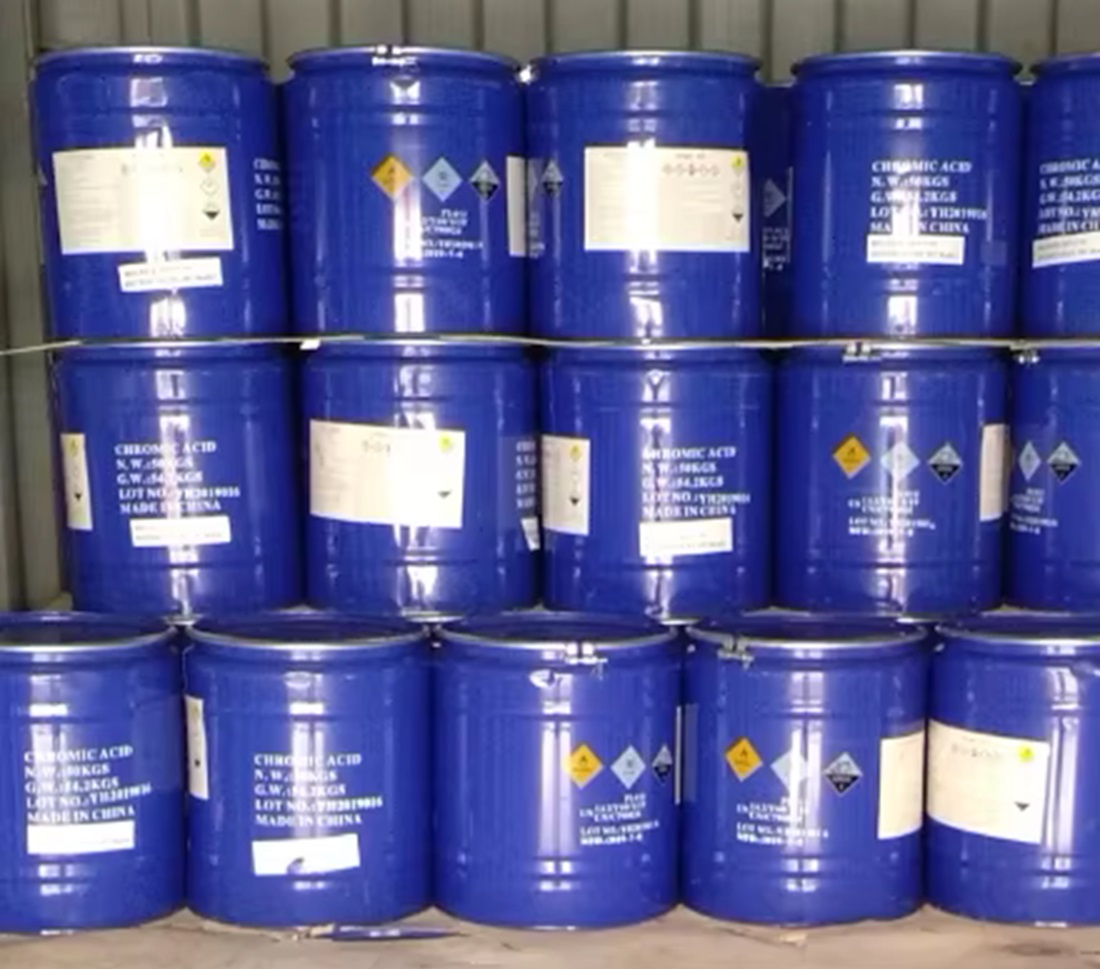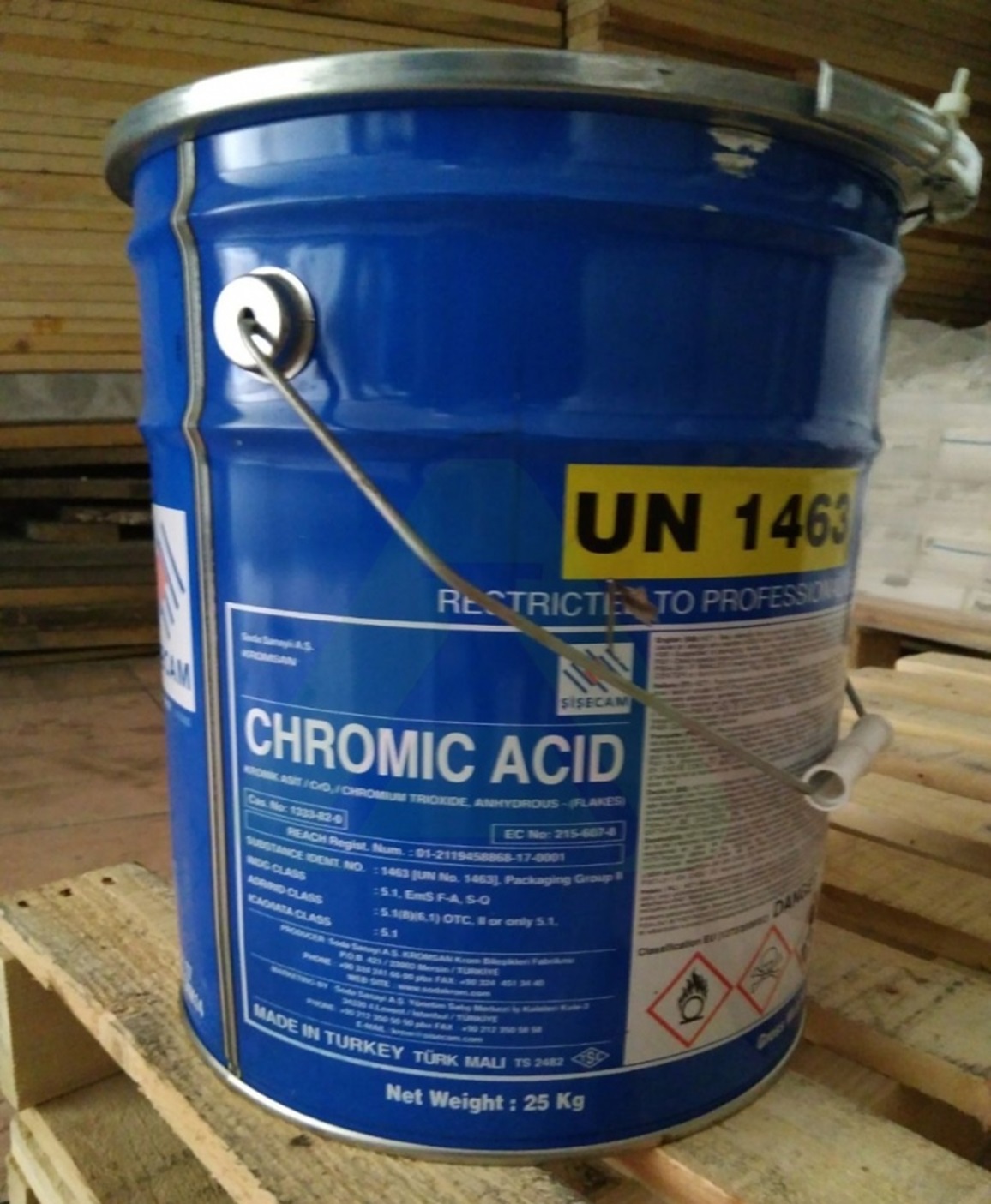We unleash your business potential by maximize the business innovation.
Send EmailChromic Acid, Cromic Acid, Chromium Trioxide, Chromium Anhydride, Dichromic Acid, 7738-94-5
Chromic acid is a powerful oxidizing agent with the chemical formula H₂CrO₄. It is commonly used in various industrial applications, including:
-
Electroplating: Used in the electroplating process to deposit a thin layer of chromium onto metal surfaces, providing corrosion resistance and a shiny finish.
-
Cleaning Solutions: Employed in cleaning solutions for glassware and laboratory equipment due to its strong oxidizing properties.
-
Wood Preservation: Used in wood preservation treatments to protect against decay and insect damage.
-
Pigment Production: Utilized in the production of pigments and dyes.
Safety Note: Chromic acid is highly toxic and corrosive. It can cause severe burns and is harmful if inhaled or ingested. Proper protective equipment and safety measures should be used when handling chromic acid.
Chromic acid is also known by several other names, including:
-
Chromium trioxide: Refers to the anhydrous form of chromic acid.
-
Chromium(VI) oxide: Another name for chromium trioxide.
-
Chromium anhydride: Refers to the same compound in its anhydrous form.
-
Dichromic acid: Refers to the dimeric form of chromic acid.
-
CAS: 7738-94-5
The EC number 231-801-5 corresponds to chromic acid. Chromic acid is a powerful oxidizing agent with the chemical formula H₂CrO₄.
Molecular Formula: H2CrO4
Names and Identifiers
| Name | Chromic Acid |
| Synonyms | AI3-51760 HSDB 6769 CCRIS 8994 Cromic acid CHROMIC ACID Chromic Acid Chromic(VI) acid Chromic acid (H2CrO4) TIANFU-CHEM Chromic acid dihydroxy(diketo)chromium EPA Pesticide Chemical Code 021101 |
| CAS | 7738-94-5 |
| EINECS | 231-801-5 |
| InChI | InChI=1/Cr.2H2O.2O/h;2*1H2;;/q+2;;;;/p-2/rCrH2O4/c2-1(3,4)5/h2-3H |
Physico-chemical Properties
| Molecular Formula | H2CrO4 |
| Molar Mass | 118.01 |
| Density | 2.290 |
| Melting Point | 196°C |
| Water Solubility | HIGHLY Soluble |
| Appearance | Liquid |
| Color | Clear, orange |
| PH | 3.03(1 mM solution);2.33(10 mM solution);2.06(100 mM solution) |
| Physical and Chemical Properties | The properties are only known to be present in solution. Obtained by dissolving chromium trioxide in water. Its solution is used for chromium plating. |
| Use | Its solution is used for chromium plating |
Risk and Safety
| UN IDs | UN 1463/1755 |
Upstream Downstream Industry
| Downstream Products | chromium(iii) fluoride tetrahydrate Sodium chromate |
Reference Information
| binary strong acid | chromic acid is a kind of binary strong acid, yellow strong acid solution, can only exist in aqueous solution, with soluble barium or lead salts to produce yellow barium chromate or lead chromate precipitation. In acidic solution, mainly in the form of dichromate, with strong oxidation. The strength of chromic acid is close to that of sulfuric acid. But its second step ionization is weak, such as: H2CrO4 = H HCrO-4;K1 = 4.1 HCrO-4 = H CrO2-4; k2 = 3.2 × 10-7 chromic acid is easy to form polyacid, such as dichromate H2Cr2O7, but its salt is not as easy to polymerize as vanadate VO3-4, because CrO2-4 bond in chromate Cr-O is stronger. In the aqueous solution of chromic acid there is the following equilibrium: 2CrO2-4 (yellow) 2h = Cr2O2-7 (orange) H2O;K = 4.2 × 1014 From this equilibrium, adding acid, in acidic solution, Cr2O72-is dominant, so the solution is orange-red, mainly dichromate; On the contrary, in alkaline (such as adding alkali to dichromate solution) solution, CrO2-4 is dominant, so yellow, mainly chromic acid. CrO2-4 for the tetrahedral structure, Cr2O2-7 is composed of two CrO2-4 tetrahedrons share a vertex composed of multinuclear complex ions, also known as a dichromate ion. The formation of dichromate can be seen as a process in which H takes the O2-in the chromate radical, loses the water molecule, and then combines with another CrO2-4. With the increase of H ion concentration, Cr2O2-7 ions may further occur this condensation, the formation of trichromate [Cr3O10] 2-, four chromate [Cr4O13] 2-and other multi-acid ions. Chromic acid can be obtained by dissolving chromium trioxide CrO3 in water, and then adding acid to it can also produce dichroic acid. |
| purification of waste gas containing chromium acid mist | waste gas containing chromium acid mist is produced in electroplating and leather industry, and chromium acid mist is harmful to human skin and respiratory tract, it should be purified. purification of chromium mist waste gas during chromium plating: the commonly used purification method is to separate the droplets of chromic acid in the form of suspended particles from the waste gas and collect them for treatment. The purifier has a variety of mesh format, baffle type, packing type, centrifugal type and condensation type, among which the mesh type is better. At present, there are two kinds of grid-type chromic acid mist purifier, vertical and horizontal, each with different models to adapt to different exhaust gas treatment capacity. The principle of the mesh purifier is that when the chromic acid mist exhaust gas passes through the multi-layer crisscross plastic plate net (or plastic window screen), under the effect of inertia, Hook, condensation, diffusion and so on, retained by the filter, condensed into liquid, flow down the filter to the guide groove. From the catheter through the liquid seal into the recovery device. When the air velocity through the filter screen is 1~3m/s, the purification efficiency is above 99%. During chromium plating, a large amount of chromic acid is brought out due to the evolution of hydrogen and oxygen. In order to prevent the release of chromic acid mist in the air of the workshop, sometimes an appropriate amount of "F-53" surfactant (potassium perfluoroalkyl ether sulfonate) is added to the plating bath, the "F-53" surfactant (potassium perfluoroalkyl ether sulfonate) is produced on the surface of the plating bath, so that a fine foam layer is formed on the surface of the plating bath, and the surface tension of the chromium plating bath is reduced, so that hydrogen and oxygen can easily escape, Control and reduce the emission of chromic acid mist. in the production of light leather in leather industry, Chrome tanning is commonly used. At present, most of the use of alum (sodium or potassium dichromate) made of basic sulfuric acid chromium salt as tanning agent. In the preparation process, the hexavalent chromium is reduced to trivalent chromium, and the temperature rises to about 100 ° C in a boiling state. Therefore, a large amount of chromic acid gas will escape with water vapor and carbon dioxide gas, not only 3-10% of chromic acid will be lost, and air pollution, it is necessary to take measures to recover. Recovery process: the alum is poured into the dissolution tank, and after being completely dissolved, it is pumped into the reaction kettle, and then the concentrated sulfuric acid is injected, and the reducing agent solution is slowly added into the kettle from the high position tank. At this time, the alum solution is boiled and reduced, the evolved gas is discharged from the exhaust pipe at the top of the kettle, and condensed by the cooling tower to the recovery tank. The exhaust gas is discharged into the atmosphere, and the recovered alum is poured into the dissolution tank for use. |
| Coagulation fixative | chromic acid is a good preservative, which can precipitate protein, however, it is easy to shrink the tissue, and the penetration is relatively slow. It is generally used in combination with other pharmaceutical agents, and can be a good fixative. Usually combined with acetic acid, the effect is good. Features: easy deliquescence, strong oxidant. Disadvantages: weak penetration, easy to make tissue contraction. |
| purpose | its solution is used for chrome plating |
| category | toxic substances |
| toxicity grade | poisoning |
| Acute toxicity | inhalation-human TCL0: 20 mg/m3 |
| flammability hazard characteristics | combustion support; Toxic chromium-containing spicy stimulus smoke released from fire scene |
| storage and transportation characteristics | warehouse ventilation; Light loading and unloading; And organic matter, reducing agent, separate storage of sulfur and phosphorus combustibles |
| extinguishing agent | water, carbon dioxide, dry powder, sand |
| Occupational Standard | TWA 0.5 mg (chromium)/m3 |
